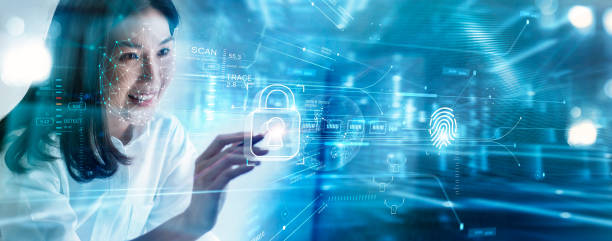In the rapidly evolving landscape of cybersecurity, where the battle between security measures and sophisticated threats is unceasing, integrating innovative technologies becomes paramount. Face ID check, a cutting-edge form of biometric authentication, has emerged as a robust solution at the forefront of digital defense. This article explores the crucial role of Face ID checks in cybersecurity, examining how this advanced authentication method enhances security, mitigates risks, and contributes to the broader landscape of safeguarding sensitive information in the digital realm.
Understanding Face ID in Cybersecurity
1. Biometric Precision and Uniqueness:
Face ID relies on the biometric precision of facial recognition technology. Unlike traditional passwords or PINs, facial features are unique to each individual, making it a highly secure method of authentication. The intricate mapping of facial contours and features creates a digital signature that is challenging to replicate.
2. Multi-Factor Authentication (MFA):
Multi-factor authentication (MFA) has become a cornerstone of cybersecurity, and Face ID serves as a pivotal component in this multifaceted approach. By combining something the user knows (password or PIN) with something the user is (biometric data), Face ID adds layer of security, reducing the risk of unauthorized access.
The Security Advantages of Face ID
1. Anti-Spoofing Measures:
Face ID incorporates anti-spoofing measures to distinguish between live faces and static images. This is crucial in preventing common attacks involving photographs or videos. The technology analyzes depth and contours, ensuring that the facial recognition process requires the presence of a real, live person.
2. Secure Enclave and Local Processing:
Security is a top priority in Face ID authentication. The facial recognition process occurs within a dedicated component called the Secure Enclave, located on the device itself. This ensures that sensitive biometric data is processed locally, minimizing the risk of interception during data transmission.
3. Continuous Learning and Adaptability:
Face ID is not static; it is designed to adapt and learn over time. As users interact with the system, the technology refines its recognition algorithms, enhancing accuracy and adapting to changes in the user’s appearance. This continuous learning ensures a high level of reliability in various scenarios.
Applications in Cybersecurity
1. Device Unlocking and Access Control:
The primary application of Face ID in cybersecurity is device unlocking. Smartphones, laptops, and other devices equipped with Face ID technology use facial recognition as a secure means of access control. This not only prevents unauthorized access to the device but also safeguards the sensitive information it contains.
2. Secure Authentication for Applications:
Beyond device unlocking, Face ID extends its security umbrella to various applications. Banking apps, secure email clients, and other sensitive platforms integrate facial recognition as an additional layer of authentication. This ensures that only authorized users can access critical information.
3. Transaction Authorization:
Face ID checks are increasingly being used to authorize transactions in the financial and e-commerce sectors. Users can securely confirm payments or authorize purchases through facial recognition, reducing reliance on traditional authentication methods such as passwords or PINs.
Also Read: Hacking and Cyber Attack Threats: Techniques and Defense
Ethical Considerations and Challenges
1. Privacy Concerns:
The widespread adoption of facial recognition technology raises valid privacy concerns. Users may need more clarification about the collection and storage of facial data. Organizations must implement transparent privacy policies and robust security measures to address these concerns.
2. Bias and Fairness:
Facial recognition algorithms may exhibit biases, leading to disparities in accuracy across different demographic groups. Ensuring fairness in developing and deploying these technologies is crucial to prevent discrimination and promote inclusivity.
3. Security Risks and Vulnerabilities:
While Face ID is designed with robust security measures, it is not entirely immune to potential risks. Threats such as deepfakes and other sophisticated attacks highlight the need for continuous advancements in security protocols and the ongoing development of anti-spoofing technologies.
Future Trends and Innovations
1. Integration with IoT Devices:
The Internet of Things (IoT) is witnessing increased integration with facial recognition. Smart homes, vehicles, and other IoT devices may leverage Face ID checks to enhance security and personalize user interactions within interconnected environments.
2. Advanced Threat Detection:
Future developments in Face check.ID technology may involve advanced threat detection capabilities. The system could evolve to recognize signs of coercion or stress, adding an extra layer of security in scenarios where users may be forced to unlock devices against their will.
3. Collaboration with Biometric Technologies:
Collaboration with other biometric technologies, such as fingerprint recognition or voice recognition, could result in more robust and secure authentication methods. This multi-biometric approach could further enhance the accuracy and reliability of user authentication.
Conclusion: Fortifying Digital Fortresses with Face ID
In conclusion, Face ID checks have emerged as a formidable ally in the realm of cybersecurity, fortifying digital fortresses against unauthorized access and potential threats. The technology’s biometric precision, anti-spoofing measures, and integration with multi-factor authentication contribute to its effectiveness in safeguarding sensitive information. As we navigate the complexities of a digital world, the ethical considerations and challenges associated with facial recognition underscore the importance of responsible development and deployment. The future holds promising innovations, as Face ID continues to evolve, adapt, and play a pivotal role in shaping the landscape of cybersecurity.
